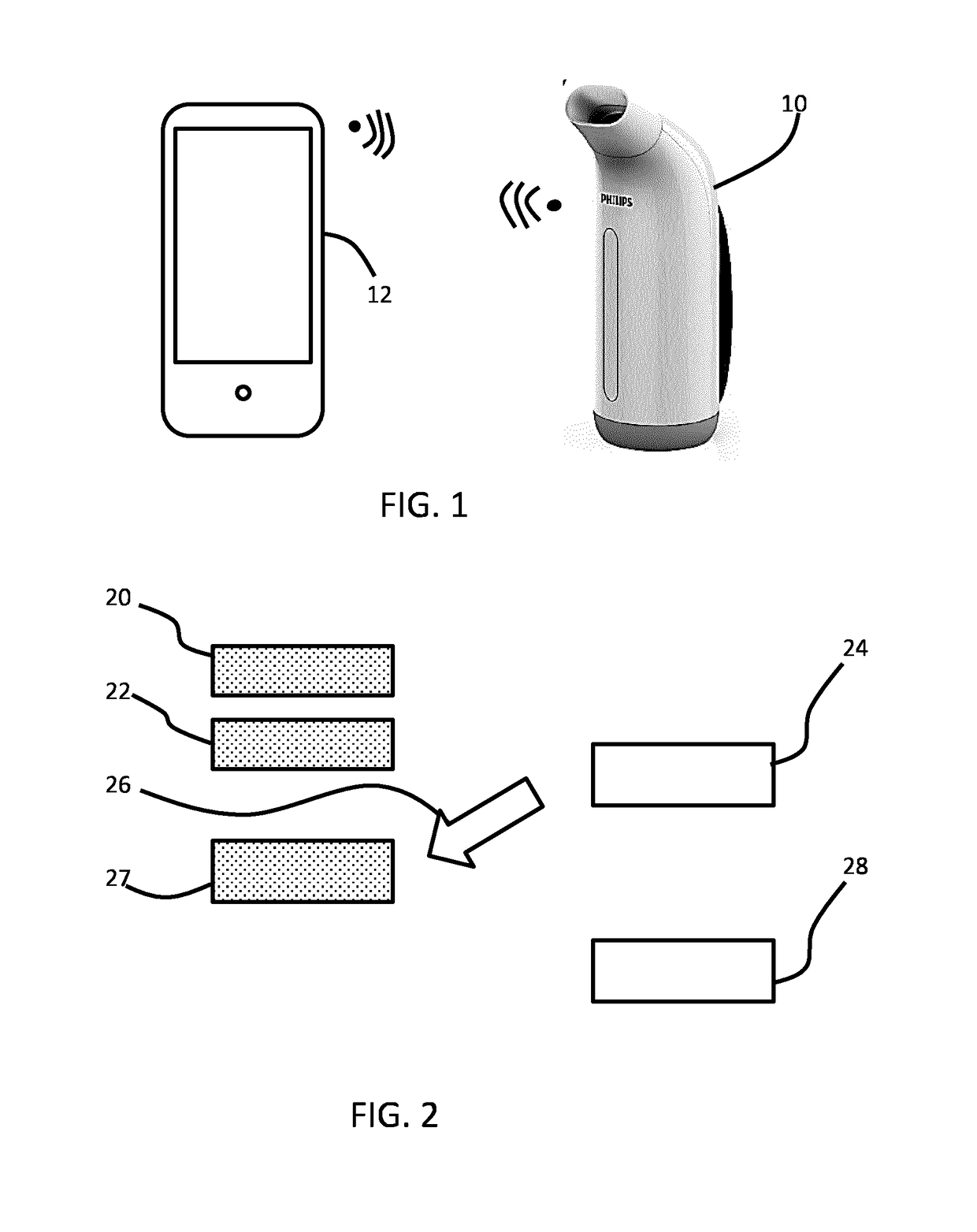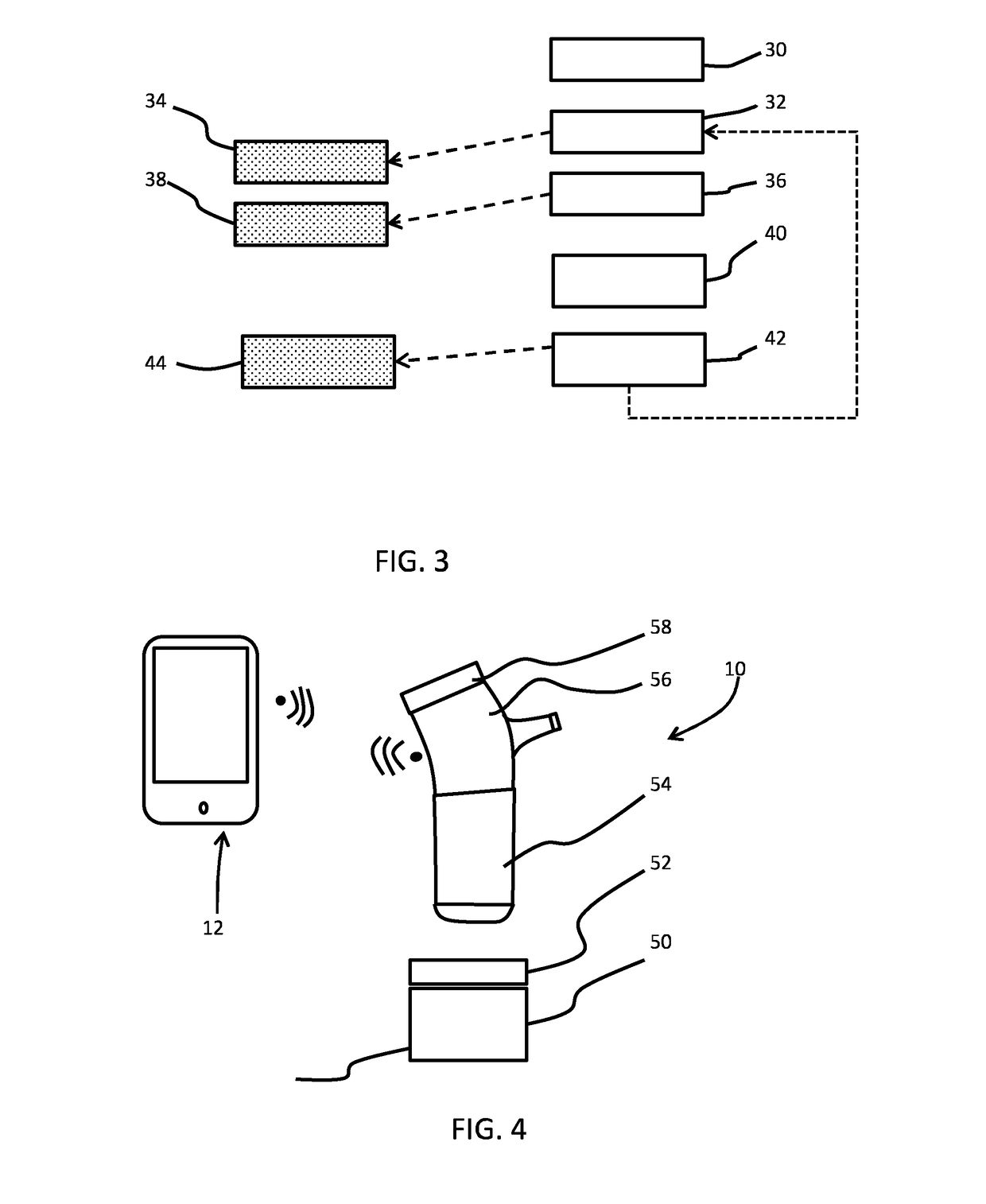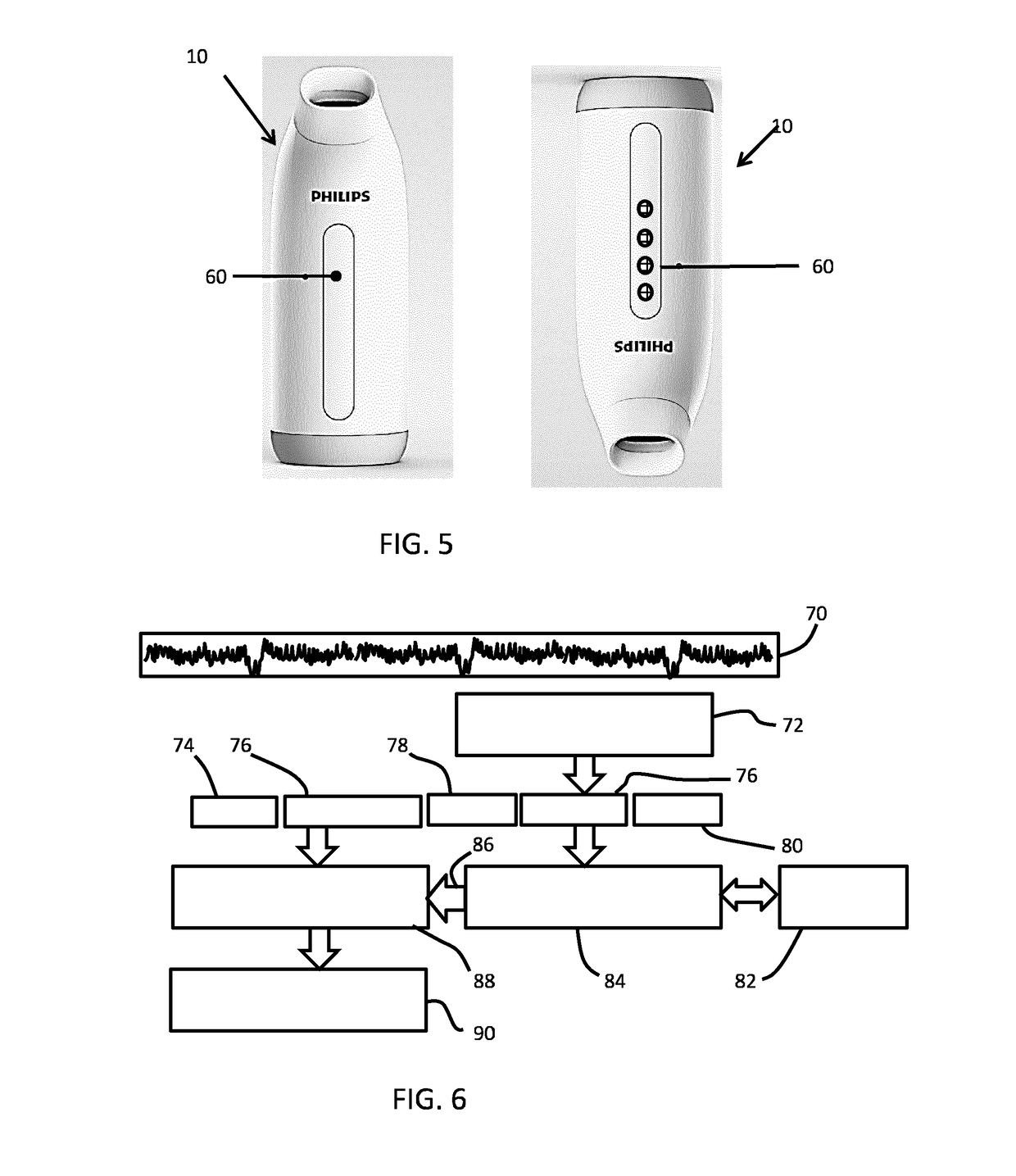Breathing training, monitoring and/or assistance device
- Summary
- Abstract
- Description
- Claims
- Application Information
AI Technical Summary
Benefits of technology
Problems solved by technology
Method used
Image
Examples
Embodiment Construction
[0183]The invention provides various improvements to breathing training, monitoring and / or assistance devices. A portable device is provided which optionally includes a gas canister, a feedback system for implementing pressure control, and a visual output for indicating adherence to and performance or execution of a breathing exercise to the user. The pressure control may provide regulation of different pressures for inhalation and exhalation as well as for different use cases or other input parameters, for example changes over time based on performance levels and / or doctor advice.
[0184]A first aspect relates to breathing training, and provides a system for home use, which is designed as a modular system for providing guidance, motivation and confidence to apply breathing techniques advised to COPD (or other) patients. The system is for providing support and guidance during the training of breathing exercises.
[0185]In addition, in some implementations it acts as an intervention tool...
PUM
 Login to View More
Login to View More Abstract
Description
Claims
Application Information
 Login to View More
Login to View More - R&D
- Intellectual Property
- Life Sciences
- Materials
- Tech Scout
- Unparalleled Data Quality
- Higher Quality Content
- 60% Fewer Hallucinations
Browse by: Latest US Patents, China's latest patents, Technical Efficacy Thesaurus, Application Domain, Technology Topic, Popular Technical Reports.
© 2025 PatSnap. All rights reserved.Legal|Privacy policy|Modern Slavery Act Transparency Statement|Sitemap|About US| Contact US: help@patsnap.com



